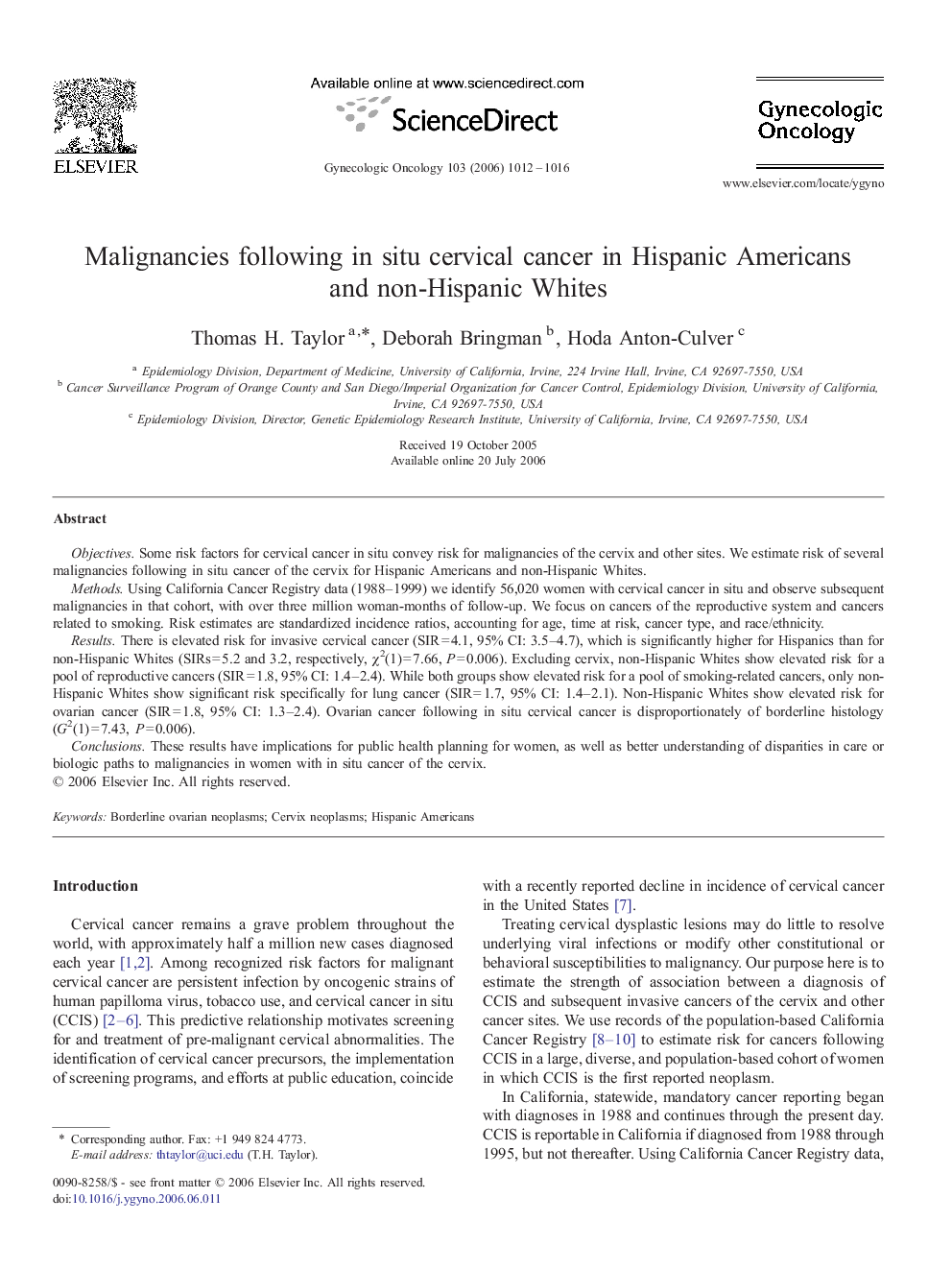| Article ID | Journal | Published Year | Pages | File Type |
|---|---|---|---|---|
| 3943661 | Gynecologic Oncology | 2006 | 5 Pages |
Objectives.Some risk factors for cervical cancer in situ convey risk for malignancies of the cervix and other sites. We estimate risk of several malignancies following in situ cancer of the cervix for Hispanic Americans and non-Hispanic Whites.Methods.Using California Cancer Registry data (1988–1999) we identify 56,020 women with cervical cancer in situ and observe subsequent malignancies in that cohort, with over three million woman-months of follow-up. We focus on cancers of the reproductive system and cancers related to smoking. Risk estimates are standardized incidence ratios, accounting for age, time at risk, cancer type, and race/ethnicity.Results.There is elevated risk for invasive cervical cancer (SIR = 4.1, 95% CI: 3.5–4.7), which is significantly higher for Hispanics than for non-Hispanic Whites (SIRs = 5.2 and 3.2, respectively, χ2(1) = 7.66, P = 0.006). Excluding cervix, non-Hispanic Whites show elevated risk for a pool of reproductive cancers (SIR = 1.8, 95% CI: 1.4–2.4). While both groups show elevated risk for a pool of smoking-related cancers, only non-Hispanic Whites show significant risk specifically for lung cancer (SIR = 1.7, 95% CI: 1.4–2.1). Non-Hispanic Whites show elevated risk for ovarian cancer (SIR = 1.8, 95% CI: 1.3–2.4). Ovarian cancer following in situ cervical cancer is disproportionately of borderline histology (G2(1) = 7.43, P = 0.006).Conclusions.These results have implications for public health planning for women, as well as better understanding of disparities in care or biologic paths to malignancies in women with in situ cancer of the cervix.
